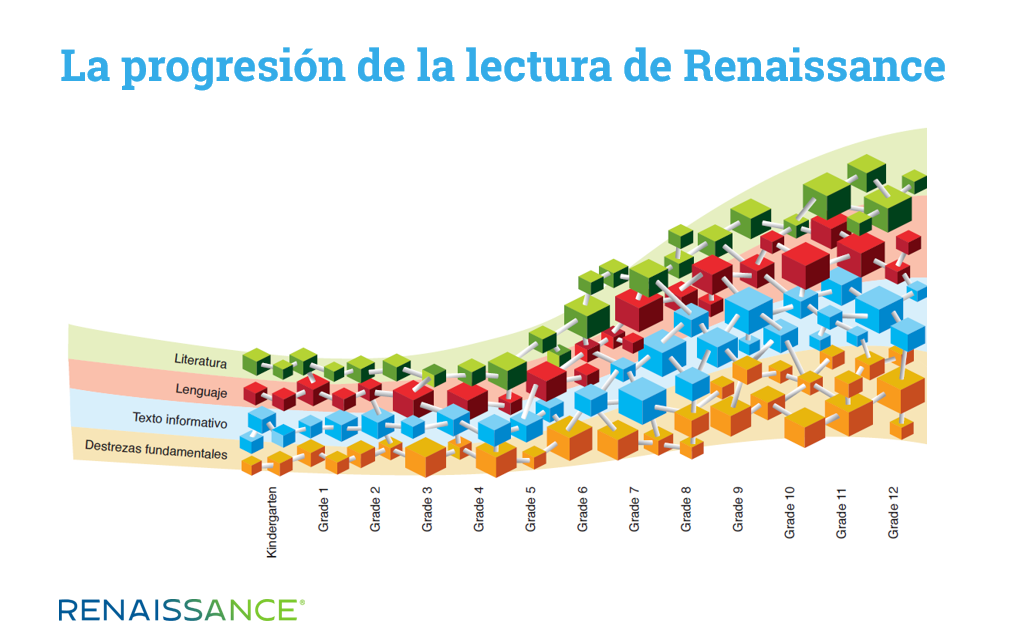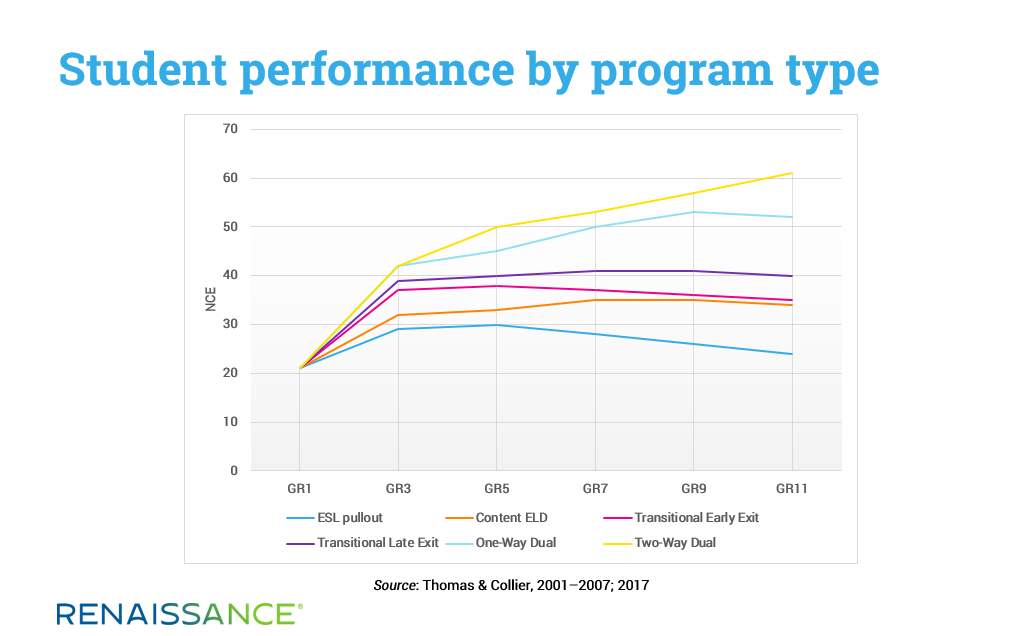September 25, 2020
Note: This is the second blog in a two-part series about bilingualism and biliteracy. To read the first blog in the series, click here.
Schools across the US are using Star Assessments in Spanish and English to assess their emergent bilingual students. In their new webinar, Doris Chávez-Linville and Dr. Carol Johnson describe new features in Star that help educators to better understand what this student population knows and can do in both languages—and what next steps to take in order to move learning forward.
We recently spoke with Doris and Carol about the common myths they encounter when they’re discussing bilingualism and biliteracy. Here are some highlights from our conversation, along with links to helpful resources.
Myth #1: If students don’t start learning two languages early, they’ll never master the second language.
Doris Chávez-Linville: I hear this one all the time. It obviously ignores many important factors, including students’ reasons for learning the second language, their level of exposure to the language, and the type of instruction that schools provide.
Growing up in Mexico, I started learning English in middle school, around age 12. We had class three times per week, and it seemed like we started in exactly the same place every school year: the verb “to be,” the pronouns “he/she/they,” etc. We focused entirely on grammar-and-translation rather than on learning how to use English in order to communicate. I suspect people have this outdated approach in mind when they bring up this myth.
Carol Johnson: It’s also important to define what’s meant by the phrase “mastering the second language.” If we’re referring to phonological mastery—sounding like a native speaker—then yes, there is typically a “critical period.” Researchers are divided on this: some say this period ends at age 6, others say it’s age 10. After that, the phonology of the first language has become so ingrained that the speaker will likely have a non-native accent when speaking the second language.
However, if we define “mastery”—as I think we should—as a high level of competency in using a language, then the age when someone starts to learn it becomes less important. Doris is one example of somebody who started after the “critical period” but who obviously communicates in English with a high level of expertise. Another example I like to point to is former Secretary of State Henry Kissinger. Nobody is going to mistake him for a native speaker of English, but I think we can say that he’s mastered the language.
In either case, it’s important not to go overboard. If we define “mastery” as the ability to use a language without ever making a single mistake, then we’re missing the larger picture here.
Myth #2: Learning two languages will confuse a child.
Carol Johnson: This is the “flip-side” of Myth #1, and the research is clear here as well. When children grow up in environments where two languages are spoken, they’re actually not confused at all. They develop the phonologies of both languages, and their brains “function” in both. They’re also very adept at looking at the people around them and identifying who speaks which language—and then using the appropriate language to address each person.
Doris Chávez-Linville: Our colleague Mayela Barrow, who co-presented the Spanish version of our new webinar with me, is a good example of this. Like me, she was born in Mexico, but her family moved to the US when she was just a year old. She’s been immersed in both Spanish and English from early childhood. As you’ll see when you watch the webinar, she’s a native speaker of both languages.
Myth #3: It’s easier to learn Spanish than it is to learn English (or vice versa).
Carol Johnson: The response to this one is simple: All languages are equally complex, but they’re complex in different ways. There’s a common perception that English is difficult for learners because of its wide vocabulary, irregular spelling, and the fact that every grammar rule seems to have at least one exception.
Doris Chávez-Linville: I’m always reminded of a famous clip from the TV show I Love Lucy, where Ricky Ricardo (who grew up in Cuba) encounters different English words with the letter sequence “-ough.” With each word—bough, rough, through, cough, and enough—the pronunciation of this sequence changes, which proves to be very frustrating for him!
English and Spanish obviously have unique features, and this is why Renaissance invested time and resources in developing an authentic learning progression for Spanish reading. Simply translating or “transadapting” our English learning progression wasn’t an option here. English has features—the different short and long vowels, for example—that do not exist in Spanish. And Spanish has features that do not exist in English—such as accent marks to show where emphasis is placed, which can also change a word’s meaning. La progresión de la lectura de Renaissance was built in order to map the development of reading in Spanish across students’ K–12 journey—so educators have an accurate understanding of the skills students have learned and the skills they’re ready to learn next.

Carol Johnson: A key point from our webinar is worth mentioning again here. In the past, educators tended to focus almost exclusively on deficits when working with this student population—what don’t they know? What can’t they understand? In the webinar, we use the term emergent bilinguals rather than “English Learners” because we want to emphasize the importance of taking an asset-based approach instead.
The Spanish learning progression and the other recent enhancements to Star Assessments result from our belief that educators need a clear understanding of what students know and can do in both languages, and how they can then build on this. Focusing solely on “gaps” and “deficits,” and trying to figure out whether one language is “easier” or “harder” than another, isn’t the most productive approach here.
Myth #4: A child who learns two languages will never feel at home in either of them. She will always be “caught between two worlds.”
Carol Johnson: I think this myth has less to do with how the children feel and more to do with how society has traditionally viewed them.
Doris Chávez-Linville: When I worked as a migrant education teacher, my colleagues would sometimes remark that they “felt really sorry” for such-and-such child. It’s important to have compassion, but feeling sorry for children doesn’t really help them. As teachers, we need to know where a student is now so we can support their learning—looking through the lens of assets rather than deficits, as Carol explained.
In the Spanish version of our webinar, our colleague Mayela tells a story that’s relevant here. As I mentioned earlier, she moved from Mexico to the US when she was a year old. She was also one of just three students in her elementary school whose home language was Spanish. When she was in fourth grade, her mom enrolled her in ballet class, and Mayela couldn’t wait to get to school the next day to tell her friends about this. Her teacher happened to overhear what she was saying and interrupted with, “It’s pronounced ‘ballet’ class, not ‘bullet’ class!”
Mayela felt terrible about this, as if she were somehow different than her monolingual classmates. In fact, she never regarded her Spanish and English bilingualism and biliteracy as an asset until she got to college and began to study education, which changed her perspective completely.
Carol Johnson: I live in Arizona and Doris lives in Florida—both places where bilingualism is the norm rather than the exception. I hope we’ve reached a point in history where the current generation of students won’t have experiences like this. An organization in the UK has created a “Being Bilingual is My Superpower!” graphic that Doris and I really like. It clearly emphasizes the asset-based approach.
Doris Chávez-Linville: This discussion reminds me of another myth: “Bilinguals are really just two monolinguals in one person.” There’s a lot of research that disproves this idea, showing that the brains of bilinguals function differently than the brains of monolinguals. Dr. Ofelia García has written and presented extensively on translanguaging, which highlights how bi- and multilingual people think and communicate. Translanguaging is not code switching. You can hear her discuss this concept in this YouTube video.
Myth #5: The best way to promote English literacy is to immerse students in English-only instruction.
Carol Johnson: We discuss this myth in detail in the webinar, pointing to a longitudinal study by Thomas and Collier in particular. They tracked the reading performance in English of emergent bilinguals in a variety of programs, and they found the dual-language programs to be most successful. Students in the English-only programs did not even reach the fiftieth percentile in terms of performance. I don’t think this is surprising, because strong literacy skills in a second language require strong literacy skills in the first language. As we’ve been saying throughout this conversation, we need to build on the skills students bring to the classroom in their home language, not ignore them.

Doris Chávez-Linville: Many experts make the point that when we only assess emergent bilinguals in English, we’re only acknowledging half of the person, leaving us with an incomplete view of what they really know and can do. In the webinar, we discuss this point through the example of a student named Jim Sanchez. Because Jim is enrolled in an English-only program, he’s only assessed in English—and he’s then given instruction that is not meeting his needs. When his reading skills are also assessed in Spanish, a very different picture emerges, giving his teachers much better insight into how they can help Jim to move forward.
Myth #6: Literacy needs to be taught separately from the content areas. It’s critical to have a separate “literacy block” in your schedule.
Carol Johnson: The idea that literacy should be—or even can be—isolated from content doesn’t make a lot of sense, whether we’re talking about bilingual or monolingual learners. In The Reading Mind (2017), Daniel Willingham discusses the importance of independent reading in building students’ vocabulary and background knowledge. Study after study demonstrates that students learn more vocabulary through reading than we could ever teach them directly, and that background knowledge—not reading ability—has the greatest impact on reading comprehension.
The goal is to match students with books at the right reading level on a wide range of topics—social studies, science, history, math, etc., as well as fiction. For emergent bilinguals, it’s important that they read in both languages. An assessment like Star will show you each student’s reading level in Spanish and/or English, so you can guide him or her to appropriate books in each language.
Doris Chávez-Linville: I recently read an interesting blog by Dana Hardt, a teacher in a dual-language program in Nevada. She makes the point that all teachers are language teachers, helping students to access the language of math, the language of science, etc. She reminds us that literacy should be embedded in everything we do.
At Renaissance, we’ve been doing a lot of work with the WIDA Consortium recently, and Carol and I quote from WIDA’s English Language Development Standards in our webinar. WIDA’s assessment of academic English is called ACCESS, because it assesses just this: students’ ability to access grade-level content. This is the point we want to communicate in the webinar: When educators fully understand what emergent bilinguals bring to the classroom, they can better help these students to access knowledge, skills, and opportunities in both languages.
Watch Doris and Carol’s new webinar—available in both English and Spanish versions—for more insights on using Star Assessments to support strong literacy development in both languages.

